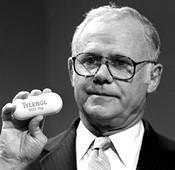The GAP in DR/BCP/EM Technology
Recently I attended a concert at my grandchildren’s school
in a small, rural community in Upstate New York. A small child in the row behind me was using
what appeared to me to be a tablet computer. Amazed by the use of technology, even
by very young children, I had thoughts of how widespread the use of
sophisticated technology had become, even in remote areas. There have been times when I felt government
agencies and some businesses assumed the presence and use of technologies to be
far greater than actual. I challenged a
DHS employee on the use of GIS and various mapping capabilities, stating that
rural communities lacked such capabilities. He replied that his information was
just the opposite, that the use of GIS and other mapping functions was very
popular and widespread.
From my experience in rural counties, computing capacity is
not as great as reported by the DHS.
This raises the question of capabilities of small and medium-sized
businesses to use sophisticated systems often displayed in the DRJ exhibit hall
and in articles about systems including rapid notification, GIS, and
applications for emergency and business continuity planning and response. Is preparedness as well equipped as we often
assume?
I suspect small businesses are underprepared with business
continuity technologies. Some larger
businesses may have the means to acquire such applications, but are not supporting
their use and maintenance. Larger
government agencies seem to have the technology, but local governments,
especially rural municipalities, have less. Awareness is lacking in some
cases. I met with an IT systems person
at a rural county who had ESRI and the tools to do mapping and global
positioning of such items as fire hydrants, but had no awareness of HAZUS-MH,
the free natural hazard tool from FEMA for mitigation planning.
What I am suggesting is that there is a gap between those
who are knowledgeable about new technologies for disaster recovery,
preparedness, and business continuity and those who are less aware or unable to
afford such technologies. The danger is
for the “haves” to assume that the “have nots” can keep up with preparedness,
response and recovery efforts when disaster strikes. The greatest gap is in public
information. We assume the public can
receive a critical message, but many cannot. As we progress with technology,
and we should, we cannot forget those who don’t have it.
And, by the way, the child sitting in the row behind me at
the concert was playing with an Etch-a-Sketch.

 In 1982, seven people died after taking capsules of Extra-Strength Tylenol that had been laced with cyanide. The sabotage spurred a national panic about the safety of over-the-counter medications, and threatened the very survival of Johnson & Johnson. Tylenol products represented one-fifth of J&J’s revenue at the time.
In 1982, seven people died after taking capsules of Extra-Strength Tylenol that had been laced with cyanide. The sabotage spurred a national panic about the safety of over-the-counter medications, and threatened the very survival of Johnson & Johnson. Tylenol products represented one-fifth of J&J’s revenue at the time.
